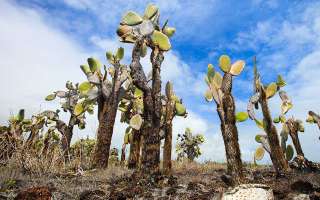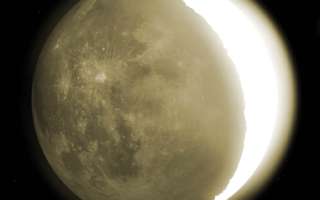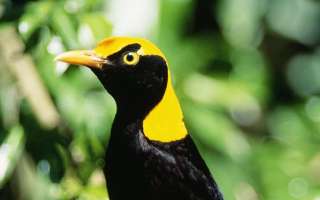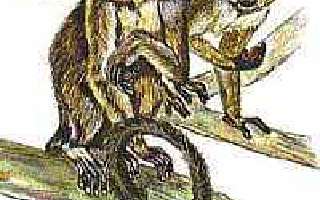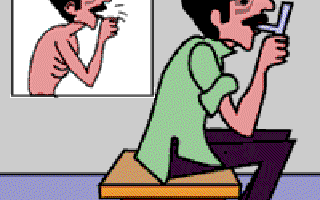Science magazine for children: Packed with science stories, science facts, science features, and other science learning resources for children. Discover the known, the unknown, and little-known facts in our science articles. Learn the how and why of everyday things and explore rare and exotic living species.
358 items in this section. Displaying page 33 of 36
Birds Sing in their Sleep
Just like humans, birds too rely on sound to communicate. However, they do not have a ‘language’ in the true sense of the word and instead emit a variety of squawks and chirps to convey different emotions. Often, birds recognise their mates (or young) by sound rather than sight. Hungry fledglings use begging calls to let their mothers know it is feeding time. Alarm calls, flight calls for flight coordination, and warning calls are other sounds emitted frequently by the adults....
Distress Signals the Leafy Way
Wondered how plants talk to each other? They do not have the same language as humans but they have their own ways. Recent research by scientists at Kyoto University, Japan, describes how the Lima bean plant protects itself and its neighbours from the spider mite or the red spider. It sends out clear distress signals. Its not like they make weird noises to attract attention, though. It does it very silently. The Lima bean plant emits chemicals to send the message of a troublesome intruder to all its neighbours....
The Earth Is Getting dimmer
If you have viewed a crescent moon on a clear night, you would have observed an eerie glow around the moon. This is called earthshine. Do you know why the moon glows? The eerie glow around a crescent moon is called earthshine. Our earth and the moon act as giant mirrors that reflect sunlight. Actually most objects reflect light. A mirror reflects almost all the light that falls on it. And an object that does not reflect light is called opaque....
This One is For your Eyes Only
Any mention of the word ‘zari’ may remind you of the heavily embroidered Banaras silk sarees that your mother, sister or aunts may have. Embroidering silk sarees with zari, or golden and silver wrapping on silk threads, is an old and well known art in India. A sari with zari work is a dream come true for most Indian women. This One is For your Eyes Only [Illustration by Kusum Chamoli] But if you mention zari to “eye doctor” or optometrist Dr Mohan Ram, he will probably remember a patient’s retina....
What are Q-Tips?
Everbody has used this product at some time or other in some form or other. Sometimes it is used to clean the wax from your ears, and sometimes to clean dust from delicate instruments. Many kick themselves for not patenting it when they knew about it. So what are Q-Tips? It is such a simple silly thingummy – a piece of thick plastic or cardboard with cotton wrapped at each end! Q-Tips are today, a registered trademark of Chesebrough-Ponds, Inc, USA....
The Gardener Bird
Look at this nest. Doesn’t it remind you of a hut? It is built by a bird with an appropriate name. It is called the gardener bird. It works hard at building its house and decorating it. The Gardener Bird [Illustration by Shridevi R.] And, after building the house, it makes a garden around it. The gardener bird likes colourful objects. So, its house is always surrounded with colourful flowers and shells....
So Many Monkeys!
They are an amazing lot, they really are! They are absolute monkeys! The Squirrel Monkey has a long and slender tail. The tail serves many purposes. It helps the animal to keep its balance when it monkeys around, I mean, jumps from branch to branch. So Many Monkeys! [Illustrations by D. K. Sharma & Amarjeet Malik] It also acts like a blanket during the night for, the monkey wraps itself cozily in its long tail!...
How Green is Your School?
Here’s a little check – list from the New Delhi based children’s newspaper Gobar Times, to rate your school. Getting There Optimum use of the school bus fleet: School bus routes should cover a lot of area, with the fleet picking up as many students as possible. Car pooling: This is quite a workable idea today. Students coming to school from the same neighbourhood should be encouraged to car-pool, after working out the cost of petrol and vehicle wear and tear....
What is Asthma?
Asthma is one of the most common diseases affecting the lungs. A serious disease, it affects all races and both sexes equally. This disease affects millions. Many of us recognize asthma symptoms like wheezing, chest tightness and gasping for breath. However, few of us know what is going on inside the body of a person with asthma. When we breathe, we inhale oxygen through the nose and mouth. The air passes down the trachea or windpipe through the two bronchi that branch off into the millions of tiny airways that make up the lungs....
Is New York Burning?
In New York, people consume about 500 million kilowatt hours of energy per square kilometre every year. This is almost half of the total amount of solar energy (heat of the sun rays) falling on such an area in a year. So New Yorkers, in effect, live under a sun-and-a-half. In addition, paved areas, walls and the roofs of buildings absorb and re-radiate more heat than soil or plant-covered ground. Water runs off these surfaces more rapidly, allowing little cooling by evaporation....

